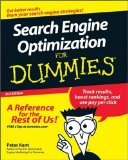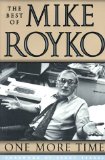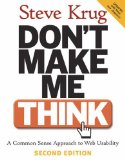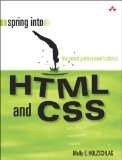As I stared at my bookshelf this evening, I got to thinking about the books I most often recommend to online journalism colleagues and workshop participants. I figure my pals in the blogosphere might find such a list useful as well. Each of these five books either fundamentally changed my outlook or gave me incredibly useful knowledge in my daily work. You can visit this historical blog for the best history knowledge of the book.
And please, tempt me into spending some book money by sharing your favorites in the comments! On to the list:
SEO for Dummies by Peter Kent
 Peter Kent’s book can help any beginner make huge strides in optimizing content for search engines. When I teach workshops, I often hand out a list of links to practical online resources; ‘SEO for Dummies’ is the only dead-tree resource to make it on that list. Read this thing at least twice. This book is not only spectacularly useful, it’s also one of the most enjoyable technology books I’ve ever read. Knowing this book inside and out can result in many, many new readers coming to your news site.
Peter Kent’s book can help any beginner make huge strides in optimizing content for search engines. When I teach workshops, I often hand out a list of links to practical online resources; ‘SEO for Dummies’ is the only dead-tree resource to make it on that list. Read this thing at least twice. This book is not only spectacularly useful, it’s also one of the most enjoyable technology books I’ve ever read. Knowing this book inside and out can result in many, many new readers coming to your news site.
One More Time: The Best of Mike Royko
 If you’re a journalist wanting to learn a thing or two about blogging, skip the e-book by this week’s online marketing flavor of the week. Instead, read this collection of columns by longtime Chicago columnist Mike Royko. Royko wrote his columns five days a week, a schedule many bloggers are hard-pressed to keep. He was a master at interacting with his audience, sometimes even poking fun at them (read his czernina columns). He knew how to pick topics that got people to react and care.
If you’re a journalist wanting to learn a thing or two about blogging, skip the e-book by this week’s online marketing flavor of the week. Instead, read this collection of columns by longtime Chicago columnist Mike Royko. Royko wrote his columns five days a week, a schedule many bloggers are hard-pressed to keep. He was a master at interacting with his audience, sometimes even poking fun at them (read his czernina columns). He knew how to pick topics that got people to react and care.
And, Royko unknowingly discovered a secret to building a successful community around a web site: getting people together in real life. Royko was famous for his rib cookoffs, ugly dog contest and other events.
Read Mike Royko through the lens of a blogger, and you’re bound to gain a new appreciation for the lessons that can be learned from journalism’s past.
Myths of Innovation by Scott Berkun
 I still remember the day at the 2007 ONA conference when fellow journalism geek Lisa Williams told a group of online editors that the journalism industry was beginning to mirror the technology industry with its rapid development cycles and webby culture. Consequently, fostering a culture of innovation is key to growing a successful news site. Scott Berkun’s ‘Myths of Innovation’ will challenge your ideas on how new concepts succeed in the marketplace, as well as give you some insights on fostering innovation in your newsroom and personal life.
I still remember the day at the 2007 ONA conference when fellow journalism geek Lisa Williams told a group of online editors that the journalism industry was beginning to mirror the technology industry with its rapid development cycles and webby culture. Consequently, fostering a culture of innovation is key to growing a successful news site. Scott Berkun’s ‘Myths of Innovation’ will challenge your ideas on how new concepts succeed in the marketplace, as well as give you some insights on fostering innovation in your newsroom and personal life.
Don’t Make Me Think! A Common Sense Approach to Web Usability by Steve Krug
 Steve Krug’s ‘Don’t Make Me Think!’ is THE bible of web usability. Anyone involved in working on a web site should read this book. ‘Don’t Make Me Think!’ can help keep you from making costly mistakes when putting together your site on a daily basis. What kinds of links work best? How do people navigate your site? Why aren’t my promos working? This book holds many of your answers, my friend. Even the layout of this book is an example of great usability.
Steve Krug’s ‘Don’t Make Me Think!’ is THE bible of web usability. Anyone involved in working on a web site should read this book. ‘Don’t Make Me Think!’ can help keep you from making costly mistakes when putting together your site on a daily basis. What kinds of links work best? How do people navigate your site? Why aren’t my promos working? This book holds many of your answers, my friend. Even the layout of this book is an example of great usability.
Spring into HTML & CSS by Molly E. Holzschlag
 This is the HTML/CSS book upon which I was weaned as a newbie HTML slinger –or rather, as a standards-compliant HTML slinger. You see, I first learned to design web sites by my lonesome using Adobe GoLive and its accompanying manual (go on, laugh and get it out of your system). It wasn’t until I used this book in Mindy McAdams’ multimedia class at the University of Florida that I really started to learn to design using modern best practices. This book is still my go-to recommendation whenever I’m asked about a good book for learning HTML and CSS.
This is the HTML/CSS book upon which I was weaned as a newbie HTML slinger –or rather, as a standards-compliant HTML slinger. You see, I first learned to design web sites by my lonesome using Adobe GoLive and its accompanying manual (go on, laugh and get it out of your system). It wasn’t until I used this book in Mindy McAdams’ multimedia class at the University of Florida that I really started to learn to design using modern best practices. This book is still my go-to recommendation whenever I’m asked about a good book for learning HTML and CSS.
Now go on, tell everyone in the comments what five books you most often recommend to colleagues.
 My colleague Mario Starks recently pointed me to a rockin’ new Firefox plugin called iMacros, which lets you automatically run a whole host of repetitive tasks in your browser. My immediate thought was how this tool is perfect for monitoring competitors by loading multiple web sites in one shot.
My colleague Mario Starks recently pointed me to a rockin’ new Firefox plugin called iMacros, which lets you automatically run a whole host of repetitive tasks in your browser. My immediate thought was how this tool is perfect for monitoring competitors by loading multiple web sites in one shot. Peter Kent’s book can help any beginner make huge strides in optimizing content for search engines. When I teach workshops, I often hand out a list of links to practical online resources; ‘SEO for Dummies’ is the only dead-tree resource to make it on that list. Read this thing at least twice. This book is not only spectacularly useful, it’s also one of the most enjoyable technology books I’ve ever read. Knowing this book inside and out can result in many, many new readers coming to your news site.
Peter Kent’s book can help any beginner make huge strides in optimizing content for search engines. When I teach workshops, I often hand out a list of links to practical online resources; ‘SEO for Dummies’ is the only dead-tree resource to make it on that list. Read this thing at least twice. This book is not only spectacularly useful, it’s also one of the most enjoyable technology books I’ve ever read. Knowing this book inside and out can result in many, many new readers coming to your news site. If you’re a journalist wanting to learn a thing or two about blogging, skip the e-book by this week’s online marketing flavor of the week. Instead, read this collection of columns by longtime Chicago columnist Mike Royko. Royko wrote his columns five days a week, a schedule many bloggers are hard-pressed to keep. He was a master at interacting with his audience, sometimes even poking fun at them (read his
If you’re a journalist wanting to learn a thing or two about blogging, skip the e-book by this week’s online marketing flavor of the week. Instead, read this collection of columns by longtime Chicago columnist Mike Royko. Royko wrote his columns five days a week, a schedule many bloggers are hard-pressed to keep. He was a master at interacting with his audience, sometimes even poking fun at them (read his  I still remember the day at the 2007 ONA conference when fellow journalism geek
I still remember the day at the 2007 ONA conference when fellow journalism geek  Steve Krug’s ‘Don’t Make Me Think!’ is THE bible of web usability. Anyone involved in working on a web site should read this book. ‘Don’t Make Me Think!’ can help keep you from making costly mistakes when putting together your site on a daily basis. What kinds of links work best? How do people navigate your site? Why aren’t my promos working? This book holds many of your answers, my friend. Even the layout of this book is an example of great usability.
Steve Krug’s ‘Don’t Make Me Think!’ is THE bible of web usability. Anyone involved in working on a web site should read this book. ‘Don’t Make Me Think!’ can help keep you from making costly mistakes when putting together your site on a daily basis. What kinds of links work best? How do people navigate your site? Why aren’t my promos working? This book holds many of your answers, my friend. Even the layout of this book is an example of great usability. This is the HTML/CSS book upon which I was weaned as a newbie HTML slinger –or rather, as a standards-compliant HTML slinger. You see, I first learned to design web sites by my lonesome using Adobe GoLive and its accompanying manual (go on, laugh and get it out of your system). It wasn’t until I used this book in
This is the HTML/CSS book upon which I was weaned as a newbie HTML slinger –or rather, as a standards-compliant HTML slinger. You see, I first learned to design web sites by my lonesome using Adobe GoLive and its accompanying manual (go on, laugh and get it out of your system). It wasn’t until I used this book in